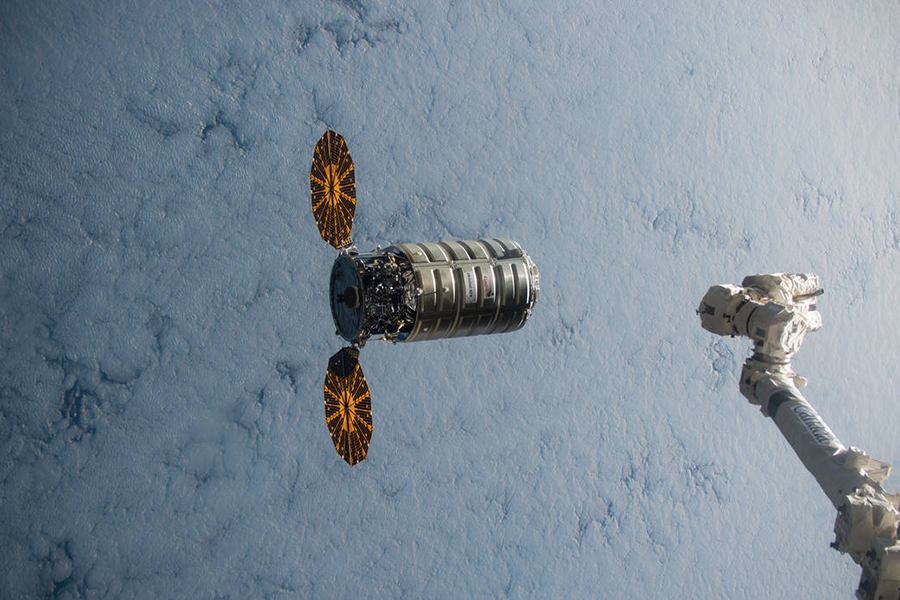Why is NASA playing with fire in space?
Loading...
In a few days, NASA will send a box into space and remotely light materials inside of it on fire to learn more about how zero gravity and limited oxygen affect flame size and spread of fire.
The findings from the experiment, and a couple of others later this year, will help the agency keep crews safe on future space missions by informing the type of gear and other craft materials NASA uses.
“A spacecraft fire is one of the greatest crew safety concerns for NASA and the international space exploration community,” said Gary Ruff, a NASA aerospace engineer who is helping conduct this experiment, called Spacecraft Fire Experiment-I, or Saffire-I, in partnership with the European Space Agency.
NASA will send the box to space on March 22 aboard an Orbital ATK Cygnus aircraft from the NASA Kennedy Space Center in Florida. Cygnus will first drop off supplies to the International Space Station, and then fly off – far away from the space station – to host the fire experiment before it reaches the Earth’s atmosphere.
The 3- by 5-foot experiment box will be split into two compartments. On one side will be a computer and instruments such as sensors, high definition video cameras and signal processing equipment. They will measure oxygen, carbon dioxide, heat, pressure and flame growth, and record the flame.
The other side of the box will hold the equipment that will ignite the flame and burn the materials inside, all of which are used routinely for astronaut clothing and for other things on spacecraft. On the first Saffire experiment, the material will be a 16- by 37-inch piece of cloth blended of fiberglass and cotton.
Called SIBAL, this cloth will be burned first from the bottom to see how the flame spreads. And if the flame extinguishes itself, scientists will light it at the top and see what happens as the flame moves opposite to the airflow, NASA explained.
“Saffire seeks to answer two questions,” said David Urban, NASA’s head of the experiment. “Will an upward spreading flame continue to grow or will microgravity limit the size? Secondly, what fabrics and materials will catch fire and how will they burn?” he explained.
The experiment will take about two-and-a-half hours, but the Cygnus will stay in space for seven days to make sure that all the data is transmitted back to the research team at NASA’s Glenn Research Center in Cleveland, Ohio. Ultimately, Cygnus and Saffire-I will burn up before entering Earth’s atmosphere.
NASA says Saffire will ignite the largest fire, burning the biggest size samples, the agency has studied.
“Saffire will be the biggest man-made fire ever in space,” said Dr. Ruff. “Currently, we can only conduct small combustion experiments in the microgravity environment of the space station. Saffire will allow us to safely burn larger samples of material without added risk to the station or its crew,” he said.
The next fire experiment, Saffire II, is scheduled to launch on another space station supply aircraft in June from Wallops Flight Facility in Virginia. Then, scientists will ignite nine materials commonly used in space, including flame retardant fabrics used for astronaut clothing, Plexiglas window samples, silicone composites, and materials used for storage containers. Each sample will be 2 by 11 inches, the sample size used by NASA for Earth-bound fire tests.
According to NASA, there has never been a fire on the International Space Station, though there was a big one in 1997 on the Russian space station Mir. The fire was fueled by an oxygen generator. The generator had to run out of oxygen for the fire to burn out.







